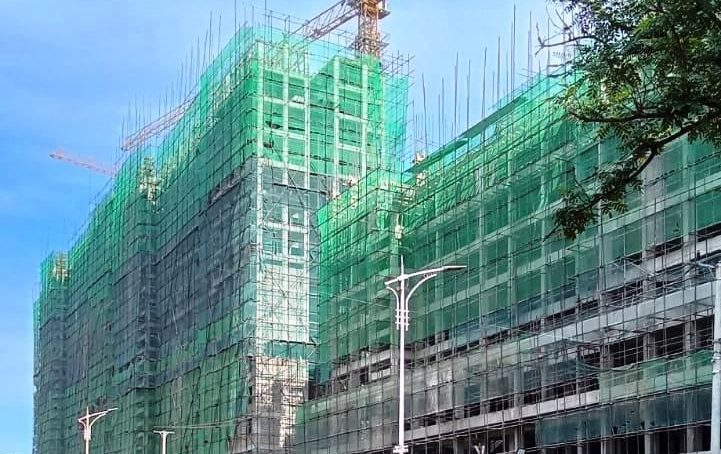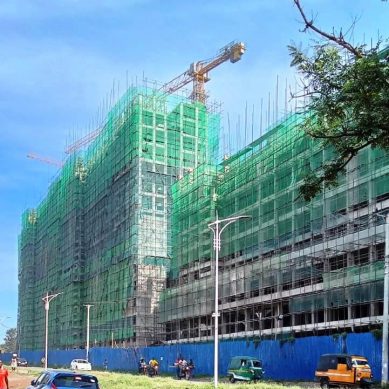
The global housing crisis is a serious issue and a significant portion of the world’s population lacks access to adequate, affordable and safe housing, with estimates from the United Nations Human Settlements Programme (UN Habitat) suggesting that three billion people will be in need of better housing by 2030.
Key drivers of this global crisis include rapid urbanisation outpacing housing development, population growth and the rising costs of construction due to factors like shortages in land, labour and materials. The crisis is most grave in rapidly urbanising regions and is exacerbated by climate change, with millions living in substandard conditions or facing homelessness.
Data from UN Habitat shows that by 2030, an estimated three billion people will need access to adequate housing, which is a demand for 96,000 new affordable housing units per day.
Globally, around 2.8 billion people lack access to adequate housing, secure land and basic water and sanitation services, with over 1.12 billion living in slums or informal settlements.
Approximately 100 million people worldwide are estimated to be homeless. About one in four people live in conditions that are harmful to their health, safety, and prosperity.
The crisis is particularly severe in rapidly urbanizing areas like Africa and the Asia-Pacific, where 62 per cent of urban dwellings in Africa and over 500 million people in Asia-Pacific lack access to basic water services. Those in inadequate housing are more vulnerable to extreme heat, severe weather events, and water scarcity.
Rapid urbanisation and population explosion are some of the ultimate reasons for the increasing in informal settlements. Factors like shortages in land, access to credits, labour and construction materials have made housing out of reach for many.
Urban settlements in Kenya have a high demand for housing, driven by rapid urbanisation, with an estimated annual demand of 250,000 new housing units.
This demand has led to a cumulative housing deficit of over two million units, a crisis most felt in cities like Nairobi, Mombasa and Kisumu. To this end, the need for affordable housing in the country is direr now than before.
Consequently, the President Ruto administration is now focusing on affordable housing project in a bid to address the housing crisis in the country.
The urban population is growing at exponential rate, creating a strain on existing housing stock and increasing demand for both new and affordable homes. Data shows that the formal housing market supplies far fewer units than are needed, resulting in a growing shortage that exceeds two million units.
Kenya’s population growth rate is higher than the global average, further contributing to the demand for housing in urban centres.
The government has responded to this through affordable housing programme under the Big Four Agenda to deliver up to 200,000 affordable units per year through public-private partnerships and a housing levy. Numerous housing projects are underway in major cities like Kisumu and Eldoret, among others.
While the initiative has created jobs and spurred development, progress remains slow, with affordability and transparency challenges still hindering access for low- and middle-income earners.
Kisumu City County on its part is quietly rewriting its urban story through a bold vision of affordable housing. With its population of about 1.1 million in need of better housing, the government of Prof Peter Anyang’ Nyong’o is racing against time to curb the rising of slums by offering affordable, cheaper, well-planned and structured housing for the homeless, those in slums, those who want to move to urban settlements and those who stay in under-structure houses.
This is being done in partnership with other development partners. Last month, the county government in collaboration with the National Social Security Fund (NSSF) launched the construction of 164 modern housing units at Milimani Estate at accost of Ksh2.4 billion ($18.6 million).
The project which will encompass 102 two-bedroom units and 62 three-bedroom apartments with servant quarters (SQs) in nine storied buildings. It is expected to take nine months to complete and will employ the latest technology and design to construct homes that are ideal for the modern family.
The project comes complete key infrastructure improvements, including upgraded water and sewer systems, paved walkways, and enhanced security installations. This comes hot on the heels of another agreement the county recently signed with UN-Habitat to construct low-cost housing worth Ksh2.7 billion ($20.9 million) in Kibuye and Muhoroni.
The United Nations Human Settlements Programme (UN Habitat) and the county government of Kisumu last month signed a housing upgrade programme intended at implementing the New Urban Agenda known as Partnership for the Implementation of the New Urban Agenda (PINUA-1) that aims to spur sustainable urbanization within the local authorities especially in informal settlements.
Also at the centre of Kisumu’s affordable housing strategy is the Lumumba Estate Redevelopment Project, a Ksh5.2 billion ($40.2 million) initiative being implemented under the national Affordable Housing Programme. The project will deliver 2,384 housing units, including 452 social housing units, 1,192 affordable units, and 740 market-rate units.
“We are replacing structures that are no longer fit for habitation. This is part of our broader urban regeneration strategy. The future is urban; you need to have a decent house,” Kisumu City Manager Abala Wanga states.
He reveals that Kisumu County has started implementing a City Spatial Plan to guide how the city grows and uses land. The plan divides the city into zones: the Urban Core, Urban Renewal zones and expansion areas to the east and north.
To support this, the county has introduced a land-use policy to open up idle land and recover over Ksh80 billion ($618 million) in unpaid land rates, with a new “use-it-or-lose-it” rule requiring owners to develop prime property or risk losing them.
The Department of Lands, Physical Planning, Housing and Mobile Development has articulated its mission to champion sustainable land management, planned urban and rural development, and decent housing for all.
Kisumu County is also improving living conditions in informal areas through the Kenya Informal Settlements Improvement Project (KISIP 2) worth Ksh1.4 billion ($10.8 million).
The project targets low-income estates like Nyalenda, Obunga, Manyatta, Kibuye, Kaloleni and Nyawita, where new roads, drainage, streetlights, and water systems are being constructed. The county is also renewing old estates by upgrading houses and infrastructure to make the neighbourhoods cleaner, safer and better for residents.
But Abala admits that Kisumu County faces several challenges in managing urbanisation, including the need for better coordination across sectors like housing, transport and water.
Rapid population growth and rural-to-urban migration are straining infrastructure and services, while many areas remain informal and underdeveloped. Limited funding, weak enforcement of regulations, and balancing the needs of residents, developers and landowners also pose challenges, as well as ensuring that low- and middle-income residents benefit equally from urban growth remains one of the county’s biggest tests.
- A Tell Media / KNA report / By Mabel Keya-Shikuku and Purity Gombe





